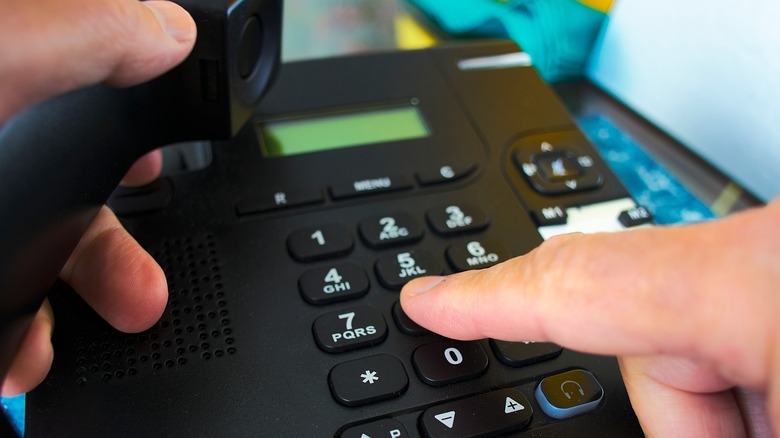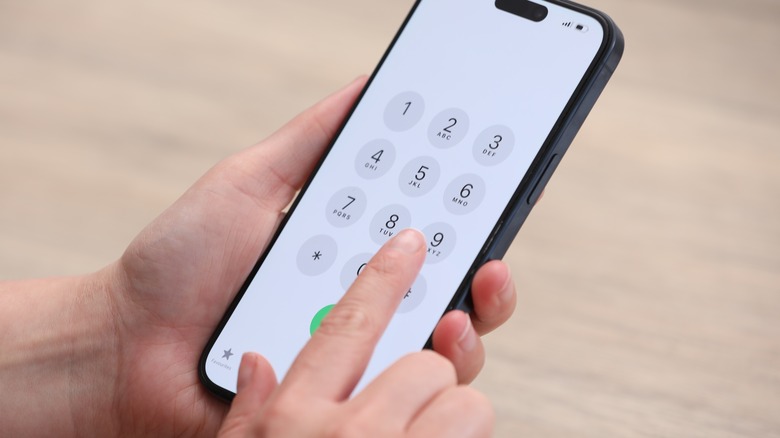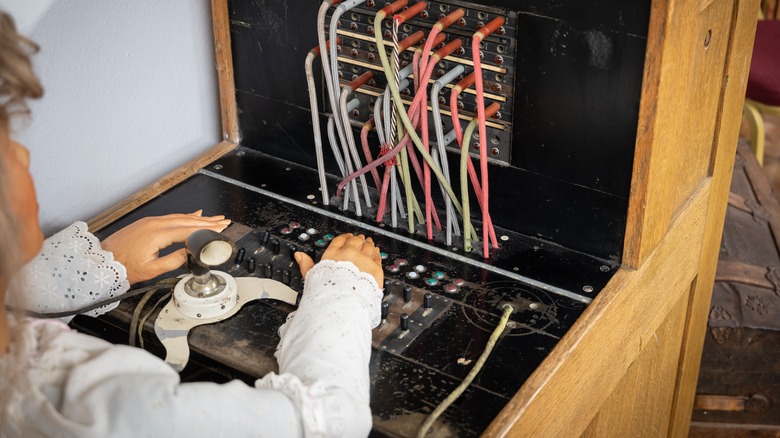These Countries Have Ridiculously Long Phone Numbers (And There's An Interesting Reason Why)
Making a phone call is simple. In essence, one just needs to dial the number, hit the call button, and wait for the other person to respond. With an Apple iPhone, it is even simpler because it has a hidden one-button call function or by using the Siri voice command. In the United States, a telephone number is comprised of seven digits, plus a three-digit area code. While in Canada, the number of digits is 11, which includes the country code +1, the three-digit area code, and the seven-digit local number. According to the website worldpopulationreview.com, some countries have even longer telephone numbers, with one having a total of 17 digits.
The countries that have the longest phone number lengths are Japan, Germany, and Sweden, with 13-digit telephone numbers; Australia with a 15-digit number; and South Korea having 17-digit telephone numbers. The reason why these countries have a long phone number is because of the additional prefix digits required to connect to them. Japan, for example, would have either nine or 10-digit telephone number, plus its area code, which can be two or three digits, i.e., the Tokyo area code is +03, while Yokohama is +045.
The reason there are additional numbers aside from the main telephone number is that the telephone network utilizes a system to route calls across different areas of a country, and for international calls, for each nation. Prefix numbers called country codes allow direct international calls, which transfer the caller from their own country's numbering system to the international one. This means that when calling an international number, one needs to add various additional numbers, which can include the country code, the area code, the prefix, and the line number, to be connected.
A number for each country
The origins of area codes and country codes come from a need for a more efficient way of organizing and connecting calls. The area code, for instance, was started in the 1940s when AT&T partnered with independent telephone operators in 1947 to create a nationwide numbering plan. This system, called the North American Numbering Plan, separated North America into 86 Numbering Plan Areas. The plan made the United States and Canada as the two primary areas. A unique detail among early U.S. telephone numbers is that it contained letters. This was because the phone company then assigned five-digit numbers to its subscribers, which was preceded by two numbers that were designated by letters and indicated the telephone exchange they were connected.
For country codes, it was the International Telecommunication Union that developed the system of unique identifiers for each country. The development of international country codes began in 1960 when the ITU added to the section E.29 of the ITU Red Book, which is a treaty that sets the international rules for radio-frequency spectrum and geostationary satellite orbits. By 1964, this was expanded to include a global numbering system, and by 1968, the definition of country codes was standardized. This numbering system gave country code +1 for America, +2 for Africa, +3 and +4 for Europe etc.
These were then further divided according to the capacity of each network, +33 for France, +44 for the U.K., ensuring that no more than 11 digits were dialed. It is worth noting that country codes can change for several reasons, such as geopolitical developments, network administration, and developments in technology. A good example of this was Germany's reunification in 1990, which gave it a single country code of 49.
Analog past to digital future
Just two years after the first regular telephone exchange was created in New Haven, Connecticut, in 1878. In this basic communication system, the first telephones were rented to subscribers in pairs, and to connect with other subscribers, individual lines needed to be put up. By 1889, the foundation of making the telephone truly interconnected was laid by Almon B. Strowger, when he created a switch capable of connecting one line to 100 lines. It is from this switching system that modern telephony as we know it exists.
The number of digits for telephone numbers today is based on the ITU E164 standard, under the International Public Telecommunication Numbering Plan. This is an open numbering plan that defines the format for international telephone numbers. The standard requires a telephone number to have a maximum of 15 digits, separated into the first digits as its country code and the remaining digits as the subscriber's telephone number. An emerging development for phone numbers is the shift towards digital telephony, wherein analog systems will be replaced with Voice over Internet Protocol, or VoIP, that uses an internet connection to make and receive calls.
The telephone is one of the best examples of the rapid and continuous development of technology. Alongside the technology, changes to the business side of the telecommunications industry paved the way for greater connectivity. Where there was once a monopoly of the American telephone system, consumers today have several options from which phone service carriers and at what prices they can subscribe to. By making it possible to talk to people instantly over long distances, the ability to communicate has forever shaped the way people worked, traveled, and related with one another.


